
by Tinne from Tantrums and Tomatoes | Nov 11, 2013 | 2013, Being Thankful, Belgium, Childhood, Competition, Contest, Education, Family, Girls, Husband, Life Lesson, Parenting, Relationships, Siblings, Tantrum and Tomatoes, World Motherhood, Younger Children
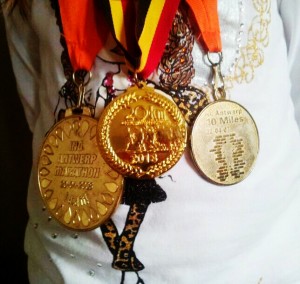 There is no denying that my eldest child is competitive.
There is no denying that my eldest child is competitive.
Fiercely competitive.
The kind which makes for a future Olympic-Gold-Medal winner – competitive.
She needs to be first. Perhaps it has something to do with the fact that she is the oldest, but I suspect it is just part of her genetic make up.
Her father has the same drive to always do better than the rest, to drive himself towards new goals, to be better, faster, to force his body into running a marathon and to try to improve his time again and again and again. And he is willing to suffer for it, to endure muscle cramps, to run until his energy levels have been completely depleted and he is more dead than alive.
I’m not like that, neither is n°2. We are happily just pottering about, going about our business and we will get there in the end. So what if it takes us hours, weeks or months. So what if we don’t finish first. We ran, didn’t we? We did our part. Besides I do not like discomfort, mentally or physically.
Like so many characteristics, my daughter’s competitiveness is a two sided sword.
It is what drove her to learn how to ride a bike without training wheels in just two days, simply because a boy in her class could do it and if that boy could do it then there was no reason why she shouldn’t be able to as well.
It got her out of diapers so quickly simply because her friend was also potty training and she wanted to be first.
But there is a downside as well. Being only four, she aims to be first in just about everything she does. And I really do mean e-ve-ry-thing . Whether it is rolling in the dust, dressing herself, putting olives on a pizza, eating said pizza, learning how to count to 20, spelling out her own name AND that of mommy, to her it is a competition. She will try to ‘win’ at it, do a victory dance when she ‘wins’ and be inconsolable when she doesn’t.
There have been many conversations about how winning is nice but not so important that you need to bawl your eyes out when some other kid takes the prize and that she cannot always be first. That is OK not to always win, not to be top in everything and that there are some things, that I’m sorry my dear darling, you will not be able to do.
This – I have to admit – will be a though lesson for her to learn. And she will have to learn it, otherwise she’ll be a pill-popping, nervous wreck by the time she is 16.
And she will have to find a way to turn that competitiveness into something positive.
But there is the glitch in the whole affair. How will she learn?
Through experience? Will it just click one day? Will she simply just realize that she is not musical (she has inherited my signing voice, which sounds like a chorus of warthogs high on helium), that she cannot really jump that high. Will she be sad, will she cry, will she regret it her whole life or… will she just simply accept. Accept that yes, she sucks at music, dancing, mathematics, but hey, she has a knack for drawing awesome portraits and makes a killer brownie, so what the heck …
How did you or your child come to terms with the fact that there is something that you or s/he just is not good at?
This is an original post to World Moms Blog from our mother of two in Belgium, Tantrums and Tomatoes.
Born in Belgium on the fourth of July in a time before the invention of the smart phone Tinne is a working mother of two adorably mischievous little girls, the wife of her high school sweetheart and the owner of a black cat called Atilla.
Since she likes to cook her blog is mainly devoted to food and because she is Belgian she has an absurd sense of humour and is frequently snarky. When she is not devoting all her attention to the internet, she likes to read, write and eat chocolate. Her greatest nemesis is laundry.
More Posts - Website
Follow Me:



by Elizabeth Atalay | Nov 6, 2013 | 2013, Africa, Education, Social Good, World Moms Blog, World Voice, Younger Children
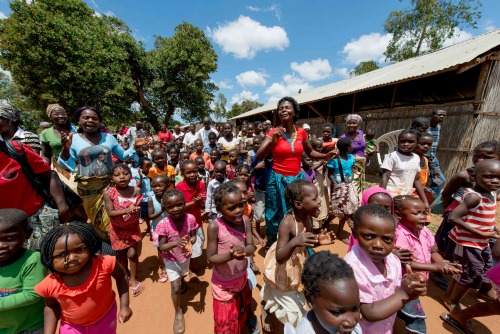
Singing and dancing is the order of the day as this procession of Save the Children preschool graduates, teachers and community members in Mozambique’s Gaza Province makes its way across the school ground to the nearby primary school, where the little graduates will be studying next year. Photo credit: Pei Ketron for Save the Children. October 2013.
In a newly published preschool programs are described as a promising policy option for improving the school readiness and later success of poor and disadvantaged children in rural Africa.
Tonight at 9pm EST World Moms Blog will join Save The Children and Multicultural Kid Blogs at #Moms4MDGs to discuss the importance of early education, and as a specific example, the success of the Save The Children preschool program in Mozambique. Ajla Grozdanic of Save The Children recently returned from a site visit to Mozambique and the early education programs there. She shared her insight in an interview with World Moms Blog as a lead up to tonights Twitter party:
World Moms Blog: In a Chicken & Egg sense, are early education programs only able to be initiated in areas where some basic infrastructure is already in place, i.e. access to clean water, healthcare & nutrition, or are they catalysts for communities to begin to pull out of extreme poverty?
AG: We are able to initiate education programs in communities at any level. In other words, having a basic infrastructure in place is not a pre-requisite for education programs, which can range from in-home daycare to in-school programs.
In fact, early childhood education can bring catalytic change for communities. Early childhood development centers and programs provide an opportunity to reach young children with basic services like healthcare and nutrition, which can be more difficult to deliver if we depended on parents to seek out these services on their own. Early childhood development centers also facilitate community mobilization, bringing parents and other community members together for projects, such as digging wells or cleaning stagnant water that hosts malaria.
Young children naturally learn from and imitate what’s in their environment–good or bad. For this reason, educating young children is key and it fosters the kinds of attitudes and behavior that can improve community well-being over the long term, such as developing good hygiene and healthy eating habits and sharing this knowledge with siblings and neighborhood children.
WMB: Could you explain a bit why Mozambique was a good fit for this program? What is the success rate for other similar early education programs Save the Children runs in other countries?
AG: Mozambique had very low coverage for preschool or early childhood development programs, so the need and demand was high. It’s also important to note that the local communities demonstrated an openness and eagerness to engage in these issues. Communities saw the potential and agreed to invest in their young children. Once they saw the results, which were very good, the word spread and the demand grew.
The World Bank Study, which is the first such evaluation of early childhood development programs in Africa, showed that children in rural Mozambique, who attended Save the Children’s preschool programs, were 24 percent more likely to enroll in primary school and were significantly better equipped to learn than children not covered by the program. While we haven’t had the funding to conduct similar studies in other countries where we offer such programs, our own results monitoring shows a similar success rate across the board.
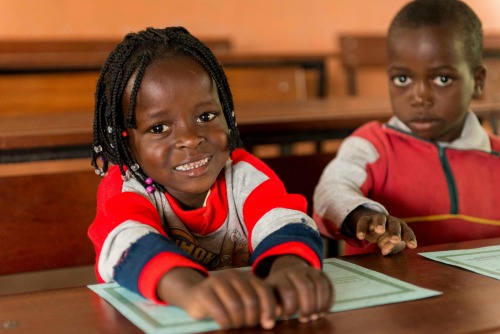
Save the Children preschool graduate, Vania, 5, from the Gaza Province in Mozambique, joined by a future classmate, gets a taste of what it will be like to sit at a real desk when she enters primary school next year. Preschoolers in her village are used to sitting on mats on the floor and were excited to sit in ‘big-kid’ chairs and desks at the nearby primary school. Photo credit: Pei Ketron for Save the Children. October 2013.
WMB: Do you see the benefits in terms of kids who have had these early intervention programs staying in school longer, and particularly for girls, marrying later or are these programs too new to tell yet?
AG: Children enrolled in preschool have a greater chance of going to school, going to school at the right age, and staying in school longer. They have higher graduation rates and are less likely to drop out of school or end up imprisoned. What’s more, staying in school is a mechanism to protect girls from early marriage. While it’s still too early to prove long-term benefits of preschool, such as that it results in girls marrying later in life, we hope to conduct such longitudinal studies in the future.
WMB: Are the children given meals through the program as an incentive for parents to send them or are the community members generally open and willing participants?
AG: It is usually not sustainable to provide meals to all children who are enrolled in preschool. Taking this into account, in most communities preschool lasts for half the school day so children can come home for meals. In some communities, parents might pool their resources in order to provide meals at preschools. In addition, preschools provide an opportunity to educate parents on how to improve nutrition for their child.
The willingness of parents to enroll their children in preschool varies from parent to parent and from community to community. Oftentimes, we’ll have a group of early adopters who are eager to enroll their children and whose success, in turn, inspires a wave of other parents–who prefer a stand-back, wait-and-see approach–to sign up their little ones.
WMB: Had you been to Mozambique before?
AG: No, this was my first time.
WMB: What is the best way people reading could support the Save the Children preschool programs in the developing world?
AG: Your readers could become a sponsor to support early childhood programs in developing countries. They could also advocate to the U.S. government to include preschool and early childhood development in its international aid programs. To learn more, visit www.savethechildren.org.
WMB: How have the mothers responded to these programs? (ie. gives them the opportunity to go to work or tend to smaller children)
AG: We encourage the participation of both mothers and fathers in their children’s education. Sending their children to preschool allows parents to tend to their daily chores, work in the field or otherwise provide for their family while knowing that their children are in good hands and are learning, to boot. In traditional societies, where childcare falls on women, preschools certainly offer an opportunity for women to engage in more productive labor and earn an additional income for their family. And we know from experience that when women earn more income for their families, they tend to invested in their children.
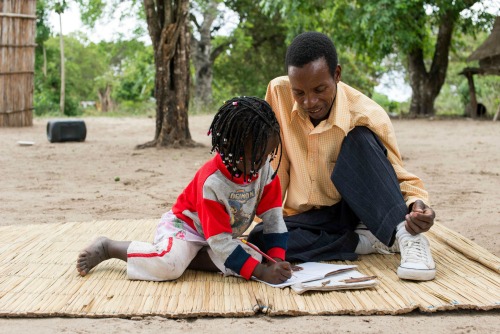
Vania, 5, practices the alphabet and counting every day with her father, Armando, who is a teacher at his daughter’s preschool, which is supported by Save the Children. Photo credit: Pei Ketron for Save the Children. October 2013.
This is an original interview and post for World Moms Blog.
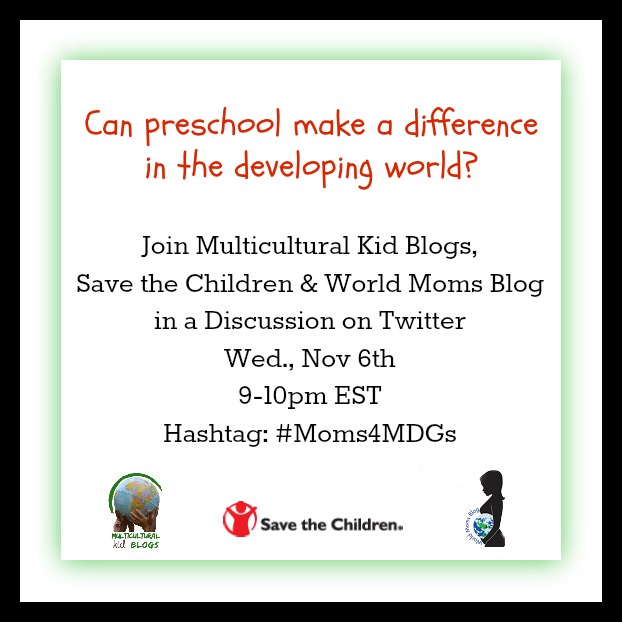

Elizabeth Atalay is a Digital Media Producer, Managing Editor at World Moms Network, and a Social Media Manager. She was a 2015 United Nations Foundation Social Good Fellow, and traveled to Ethiopia as an International Reporting Project New Media Fellow to report on newborn health in 2014. On her personal blog, Documama.org, she uses digital media as a new medium for her background as a documentarian. After having worked on Feature Films and Television series for FOX, NBC, MGM, Columbia Pictures, Warner Brothers, 20th Century Fox, and Castle Rock Pictures, she studied documentary filmmaking and anthropology earning a Masters degree in Media Studies from The New School in New York. Since becoming a Digital Media Producer she has worked on social media campaigns for non-profits such as Save The Children, WaterAid, ONE.org, UNICEF, United Nations Foundation, Edesia, World Pulse, American Heart Association, and The Gates Foundation. Her writing has also been featured on ONE.org, Johnson & Johnson’s BabyCenter.com, EnoughProject.org, GaviAlliance.org, and Worldmomsnetwork.com. Elizabeth has traveled to 70 countries around the world, most recently to Haiti with Artisan Business Network to visit artisans in partnership with Macy’s Heart of Haiti line, which provides sustainable income to Haitian artisans. Elizabeth lives in New England with her husband and four children.
More Posts
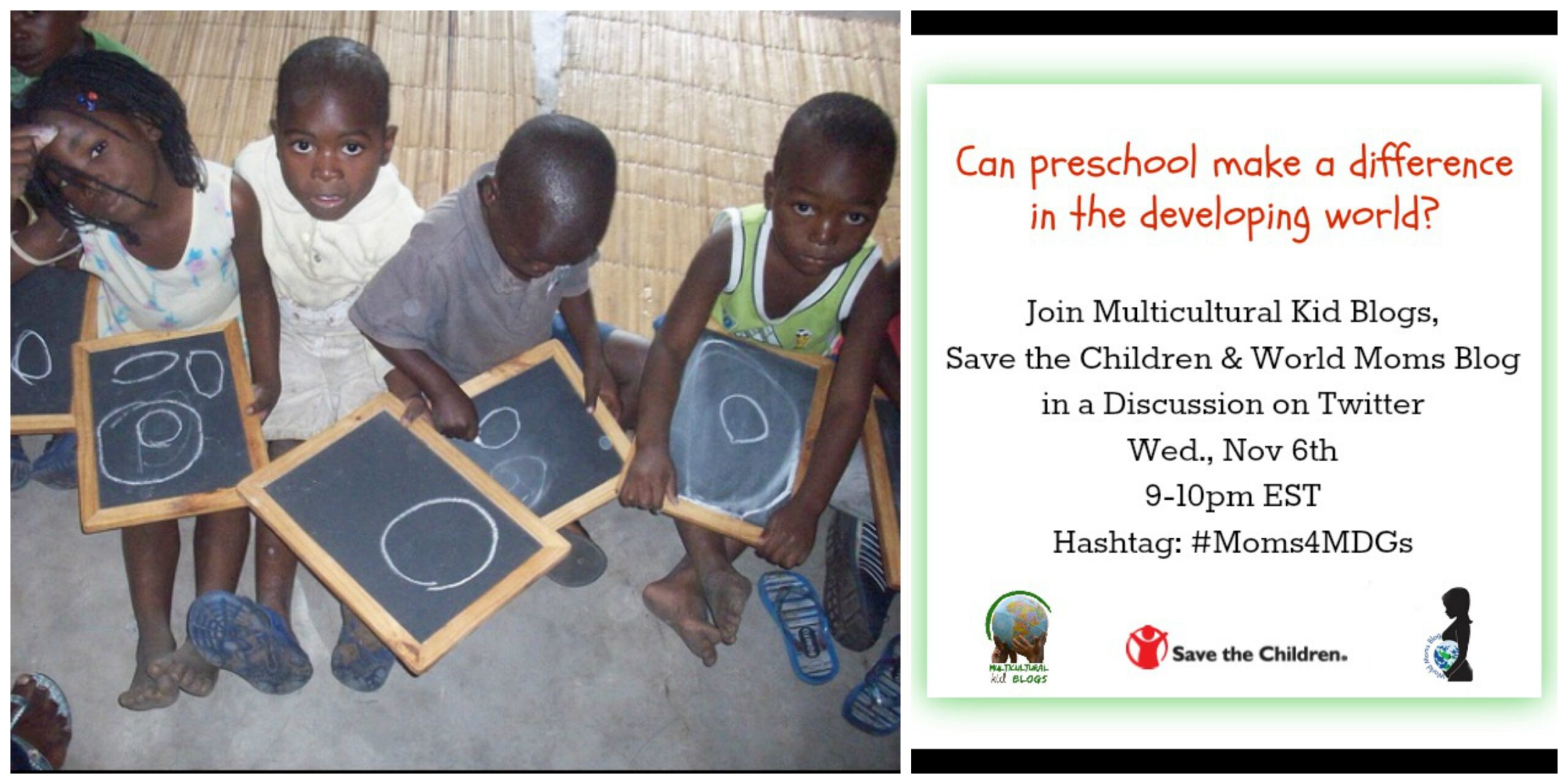
by Elizabeth Atalay | Nov 5, 2013 | 2013, Childhood, Education, Social Good, World Voice, Younger Children
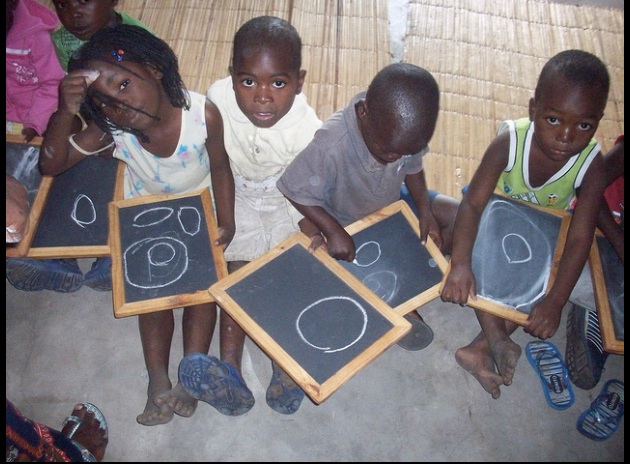
Photo Credit Save The Children
Where I live it is a given that most parents will send their kids to pre-school, some as young as two years old. It is common belief that early education builds a strong foundation for future learning, and we take for granted that our kids will go on to higher education. In other areas of the world where food security, clean water, sanitation and extreme poverty are primary concerns, education can be a luxury. In some cases in these areas it is not uncommon for an older child to begin formal primary education for the first time creating classrooms of mixed ages.
Back in 2008, a $1 million donation from the 2007 Idol Gives Back television special, helped to build escolinhas or preschool centers targeting orphans and vulnerable children for Save the Children‘s program in Mozambique. Since then the program has reached about 5,000 three to six year olds and their families, and it continues to run with the help of trained volunteers from rural communities.
Children in developing countries, like Mozambique, who attend early childhood development programs are more likely to enroll in school and enter school at the right age. This is important because children who are over-age for their grade level are more likely to drop out, so early childhood development programs actually increase the chances that children will stay in school longer.
Due to the success of the preschool centers Save The Children was able to continue to find funding, and recently the progress seen in the area caught the eye of the Government of Mozambique, resulting in the implementation of similar early childhood education programs throughout the country.
A new World Bank evaluation shows early childhood programs help children thrive and learn more in rural Africa. The recently released , is good news for children and families in Africa.-Save The Children
In a country where most inhabitants live in rural interior areas that are prone to “hungry seasons” of flooding or drought, kids enrolled in early childhood development centers benefit from access to health care and interventional care such as deworming, malaria prevention, nutritional support or social welfare.
Investment in early childhood development can provide the greatest return, and the results from these Early Learning Centers are proof. It is important to reach kids before it is too late, before they have dropped out of school, or grown up without reaching their full potential. Development aid and countries have the opportunity to make a lasting difference in health outcomes, economic productivity, and educational opportunities by investing more human and financial resources into early childhood development programs.
To find out more about early education and Save The Children’s program in Mozambique join us tomorrow night, Wednesday November 6th from 9-10pm EST for a #Moms4MDGs twitter party with Save the Children, Multicultural Kids Blogs and World Moms Blog! Hope you can make it!

This is an original post written by Elizabeth Atalay of Documama for World Moms Blog.

Elizabeth Atalay is a Digital Media Producer, Managing Editor at World Moms Network, and a Social Media Manager. She was a 2015 United Nations Foundation Social Good Fellow, and traveled to Ethiopia as an International Reporting Project New Media Fellow to report on newborn health in 2014. On her personal blog, Documama.org, she uses digital media as a new medium for her background as a documentarian. After having worked on Feature Films and Television series for FOX, NBC, MGM, Columbia Pictures, Warner Brothers, 20th Century Fox, and Castle Rock Pictures, she studied documentary filmmaking and anthropology earning a Masters degree in Media Studies from The New School in New York. Since becoming a Digital Media Producer she has worked on social media campaigns for non-profits such as Save The Children, WaterAid, ONE.org, UNICEF, United Nations Foundation, Edesia, World Pulse, American Heart Association, and The Gates Foundation. Her writing has also been featured on ONE.org, Johnson & Johnson’s BabyCenter.com, EnoughProject.org, GaviAlliance.org, and Worldmomsnetwork.com. Elizabeth has traveled to 70 countries around the world, most recently to Haiti with Artisan Business Network to visit artisans in partnership with Macy’s Heart of Haiti line, which provides sustainable income to Haitian artisans. Elizabeth lives in New England with her husband and four children.
More Posts

by Kyla P'an (Portugal) | Oct 25, 2013 | 2013, Being Thankful, Childhood, Communication, Domesticity, Education, Entertainment, Home, Humor, Kids, Life Lesson, Me-Time, Motherhood, Parenting, Relationships, School, Stress, Traditions, USA, World Motherhood, Younger Children
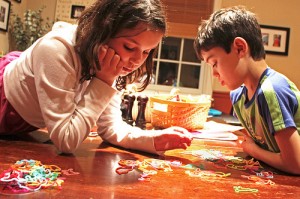 Last week my 7-year-old daughter invited a friend over for a playdate after school. My daughter and this child aren’t close friends, in fact, they aren’t even in the same class at school but they did play on the same town soccer team last year and the child has invited my daughter over a few times—including to her 7th birthday party—so we were due to reciprocate.
Last week my 7-year-old daughter invited a friend over for a playdate after school. My daughter and this child aren’t close friends, in fact, they aren’t even in the same class at school but they did play on the same town soccer team last year and the child has invited my daughter over a few times—including to her 7th birthday party—so we were due to reciprocate.
This particular little girl comes from a family of four children. She lives nearby in a large house in a posh sub-division and with four kids in her home, they have a lot of toys and things to play with.
Furthermore, her mom is one of those Alpha moms, who runs various nominated volunteer positions at school and who always seems to have her stuff together: pressed and polished at morning drop-off and calm and controlled when you see her in the pick-up line at the end of the day. You know the sort. (more…)
Kyla was born in suburban Philadelphia but spent most of her time growing up in New England. She took her first big, solo-trip at age 14, when she traveled to visit a friend on a small Greek island. Since then, travels have included: three months on the European rails, three years studying and working in Japan, and nine months taking the slow route back from Japan to the US when she was done. In addition to her work as Managing Editor of World Moms Network, Kyla is a freelance writer, copy editor, recovering triathlete and occasional blogger. Until recently, she and her husband resided outside of Boston, Massachusetts, where they were raising two spunky kids, two frisky cats, a snail, a fish and a snake. They now live outside of Lisbon, Portugal with two spunky teens and three frisky cats. You can read more about Kyla’s outlook on the world and parenting on her personal blogs, Growing Muses And Muses Where We Go
More Posts - Website
Follow Me:


by Jennifer Burden | Oct 18, 2013 | 2013, Education, Family, Health, Home, Human Rights, Humanitarian, Inspirational, Kids, Natural Disaster, Philanthropy, USA, World Events, World Motherhood
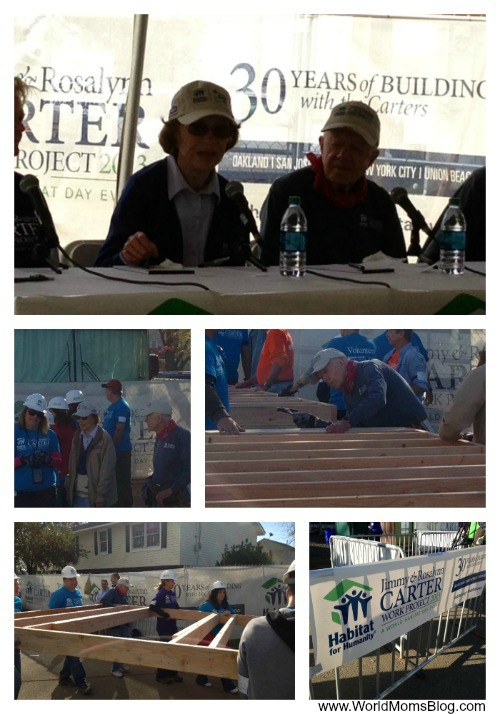
When it comes to helping people outside the United States, Former President Jimmy Carter says, “We don’t distinguish.”
In celebration of this week’s World Habitat Day, Carter said last Saturday, “We think the folks [we build housing for] in other countries are just as good and needy as the folks in America.”
The message that President Jimmy Carter and First Lady Rossalyn Carter brought to Union Beach, NJ, a town that was hit by Hurricane Sandy almost one year ago, was one of hope, for the people there and the people all around the world.
The Carters have spent over 3 decades giving a hand up to families in need of affordable shelter through Habitat for Humanity, a Christian non-profit that builds housing for the people who need it most. And, by the looks of it, they are not stopping. Last week, on the Habitat for Humanity work site in Union Beach, NJ, the President and First Lady, in their work clothes, helped build house framing for over 2 hours. (They are for real, guys.) This was the tail end of the Carter work project this year that went around the United States and ended in New Jersey.
The local branch of Habitat for Humanity in Monmouth County, New Jersey, USA, has completed 40 homes since Super Storm Sandy hit in October of last year. Eighty percent of their service area was affected by the storm from the town of Aberdeen to the town of Ocean.
First Lady Rossalyn Carter stated, “This [worksite] was a special one for us. Super storm Sandy hit, and we’ve been worried about you all ever since.”
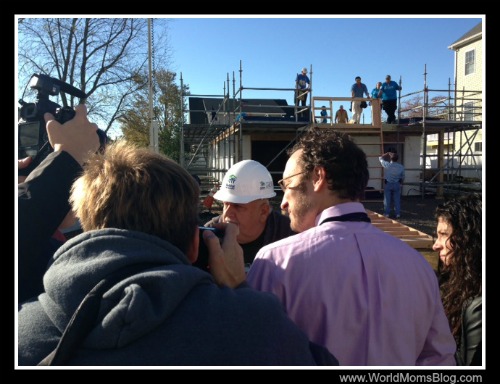
Mr. Lamberson is interviewed by the Press on the Carter’s worksite. That’s his home in the background being rebuilt after Super Storm Sandy damaged it almost one year ago.
The Carters have proved themselves tireless champions of human justice.
“We find that Habitat home owners were hopeless and have never known success. They’ve been promised outside help that never arrived, but Habitat is not that way. Local people decide what kind of houses to build, where and which families. Lots of the homeowners become transformed.” — President Carter.
The Former President also explained that the houses in Union Beach were being raised by 8 feet to withstand any future super storms. He said, “Places have to be prepared for the next natural disaster.”
The Habitat model is not a 100% hand out. Homeowners pay the full cost of the house, and they must put in at least 100 hours of work. However, in most cases, their mortgage is 0% interest.
And the organization requests their volunteers fundraise or pay to help, as well as, dedicate their woman and man hours.
Former First Lady Rossalyn Carter explained that education can be greatly effected when children do not have a home, and she referred to a family in Seattle, Washington, USA who were living in their automobile. After they moved into their Habitat home, their son became top of his class just months after moving into their Habitat home.
The Former First Lady described another mother who previously cringed to answer her door to her substandard housing because it was often the police saying that her sons were in trouble. Her sons were never home. After Habitat arrived and built them a new house, her sons returned home with their friends because they were proud of where they lived and were staying out of trouble.
These are the types of examples that keep the Carters going and using their celebrity to further the cause for adequate housing.
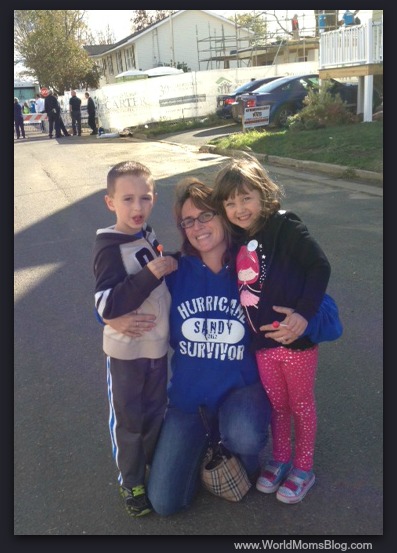
“Hurricane Sandy Survivor” — Kelly is a mom of twins whose home was flooded in Super Storm Sandy last year. Her family is still displaced and waiting for work on their home to be finished almost one year later (not a Habitat home). She came by with her kids to catch a glimpse of the Carters on Saturday.
“When we go to South Africa, South Korea, the Philippines, Europe, Hungary , and 3 times in Mexico, people are the same wherever we go.” — Former First Lady Rossalyn Carter
Exactly.
This is an original post to World Moms Blog by Founder, Jennifer Burden in NJ, USA. Jennifer is no stranger to Habitat for Humanity. As a junior at Villanova University, she spent a week building an adobe-style house in New Mexico, USA for a low-income family through the organization.

Jennifer Burden of World Moms Blog with Jennifer Sneed of Habitat for Humanity in Monmouth County, NJ at the Carter worksite in Union Beach, NJ on October 12, 2013.
Photo credits to the author.
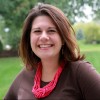
Jennifer Burden is the Founder and CEO of World Moms Network, an award winning website on global motherhood, culture, human rights and social good. World Moms Network writes from over 30 countries, has over 70 contributors and was listed by Forbes as one of the “Best 100 Websites for Women”, named a “must read” by The New York Times, and was recommended by The Times of India.
She was also invited to Uganda to view UNICEF’s family health programs with Shot@Life and was previously named a “Global Influencer Fellow” and “Social Media Fellow” by the UN Foundation. Jennifer was invited to the White House twice, including as a nominated "Changemaker" for the State of the World Women Summit. She also participated in the One Campaign’s first AYA Summit on the topic of women and girl empowerment and organized and spoke on an international panel at the World Bank in Washington, DC on the importance of a universal education for all girls. Her writing has been featured by Baby Center, Huffington Post, ONE.org, the UN Foundation’s Shot@Life, and The Gates Foundation’s “Impatient Optimists.” She is currently a candidate in Columbia University's School of International and Public Affairs in the Executive Masters of Public Affairs program, where she hopes to further her study of global policies affecting women and girls.
Jennifer can be found on Twitter @JenniferBurden.
More Posts - Website
Follow Me:


by Elizabeth Atalay | Oct 1, 2013 | 2013, Education, Eye on Culture, Hobby, Humanitarian, Kenya, Media, Social Good, World Moms Blog
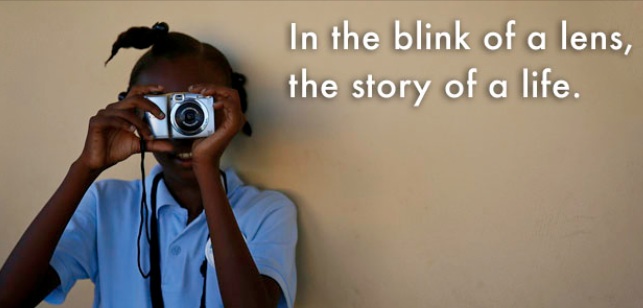
The Founder of the View Finder Workshop describes her inspiration:
“I WAS WALKING THROUGH CITÉ SOLEIL, the largest slum in the Western Hemisphere located in Haiti, one of the poorest places on Earth. Trash littered the streets and dirty stagnant rainwater was often used as latrines. The sun pulsated directly overhead, bleaching the blue sky to a blinding white. Sweat droplets raced down my spine and pooled at my lower back. Children dressed in rags – or for some, in nothing at all – played a spirited game of soccer with a half-inflated ball. I snapped a picture of a group of rambunctious kids, only to have eager young hands grab at my camera to see the image captured on my screen.
The novelty of the reproduction faded and most darted off between the shanty houses. One remained, diligently pointing at each face on the screen, as if ticking them off in his head. He stopped at the last one. His own. He let out a burst of pure, innocent, giggling glee and scampered off. Alone, I realized that for people who have next to nothing, a mirror is an unattainable luxury. This child only met his reflection by process of elimination. For he knew which ones were his friends and which one was the stranger.
I was struck dumb. For I never realized a person could walk through life without knowing his own physical self. But photography can change that. It lets a child see himself & his world through different eyes. By learning tangible skills & creating new avenues of self-expression, he can contribute to his life & his community.
And thus, the seed for View Finder Workshop was planted.”
Babita Patel.
founder, humanitarian photographer – Excerpted from the View Finder website
From that moment View Finder Workshops were born. They were born to put the camera into the hands of children who have never had a lens through which to objectively view or portray the world in which they live. Children love taking photographs, and especially love taking, and seeing photos of themselves. These are not children growing up in a “selfie” obsessed culture, but kids who may not have ever even seen a mirror image of themselves. To put a camera in their hands proves liberating and empowering in a way that is hard to imagine, until you witness the pure joy on their faces when they see the images that they capture.
Photography as a visual medium provides a creative expression and ability to both view, and share a perspective from each child’s personal lens. And there is nothing like viewing the world through the eyes of a child.
The results of last January’s workshop in Haiti in collaboration with Respire Haiti, brought fresh views to the children of Gressier, Haiti who had been serving as restaveks (children enslaved as domestic servants), orphans & other vulnerable children. The images captured were often stark and beautiful. The photos were then exhibited in September in an LA gallery show in Santa Monica where gallery patrons were able to view the results of what the children were able to capture with a camera in their hands. A few of the kid’s prints even sold!
Next the Viewfinder Workshop is gearing up for a workshop in Kenya This fall, where they will be introducing photography to 40 students enrolled at their new school in the Lenana slum, in the country’s capital, in a program that they hope to make a sustainable curiculum. These programs need support to become sustainable, and this is where you can come in. You can like View Finder on Facebook , follow on Twitter , and/or make a donation to help other children to tell their story through images. You may just be the one to benefit from the enchanting worlds they share.
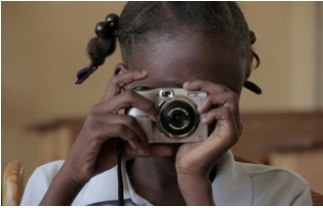
Have you ever put the camera in your own kids hands to see what they come up with?
This is an original post written for World Moms Blog by Elizabeth Atalay of documama.org.
*All photos credited to the View Finder Workshop website.

Elizabeth Atalay is a Digital Media Producer, Managing Editor at World Moms Network, and a Social Media Manager. She was a 2015 United Nations Foundation Social Good Fellow, and traveled to Ethiopia as an International Reporting Project New Media Fellow to report on newborn health in 2014. On her personal blog, Documama.org, she uses digital media as a new medium for her background as a documentarian. After having worked on Feature Films and Television series for FOX, NBC, MGM, Columbia Pictures, Warner Brothers, 20th Century Fox, and Castle Rock Pictures, she studied documentary filmmaking and anthropology earning a Masters degree in Media Studies from The New School in New York. Since becoming a Digital Media Producer she has worked on social media campaigns for non-profits such as Save The Children, WaterAid, ONE.org, UNICEF, United Nations Foundation, Edesia, World Pulse, American Heart Association, and The Gates Foundation. Her writing has also been featured on ONE.org, Johnson & Johnson’s BabyCenter.com, EnoughProject.org, GaviAlliance.org, and Worldmomsnetwork.com. Elizabeth has traveled to 70 countries around the world, most recently to Haiti with Artisan Business Network to visit artisans in partnership with Macy’s Heart of Haiti line, which provides sustainable income to Haitian artisans. Elizabeth lives in New England with her husband and four children.
More Posts

 There is no denying that my eldest child is competitive.
There is no denying that my eldest child is competitive.






















